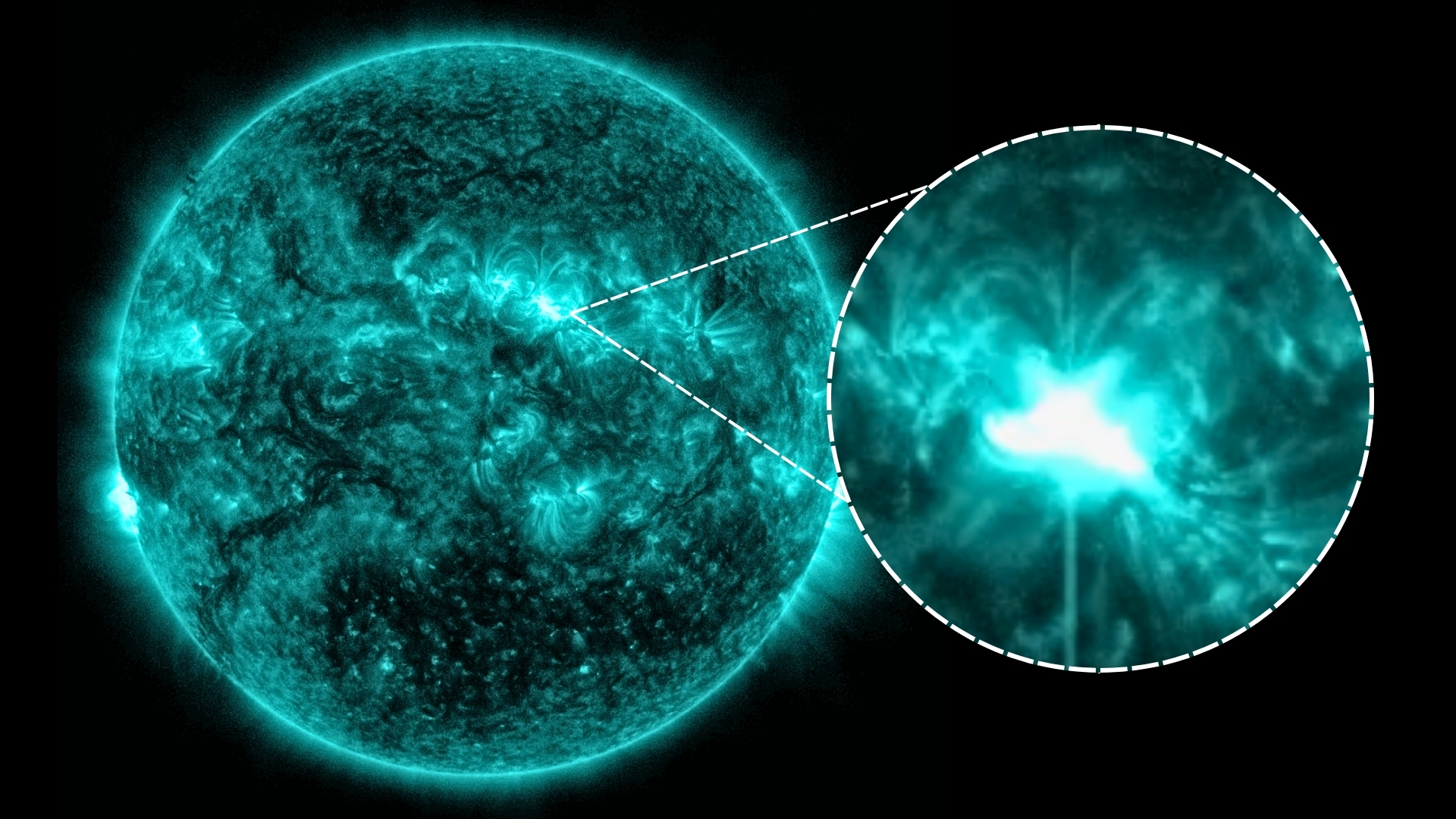Where will the 'Blood Worm Moon' total lunar eclipse be visible tonight?
A total lunar eclipse on March 13-14, 2025, will be visible across Earth's night side. See detailed maps of where and when to watch the dramatic 'Blood Moon'.
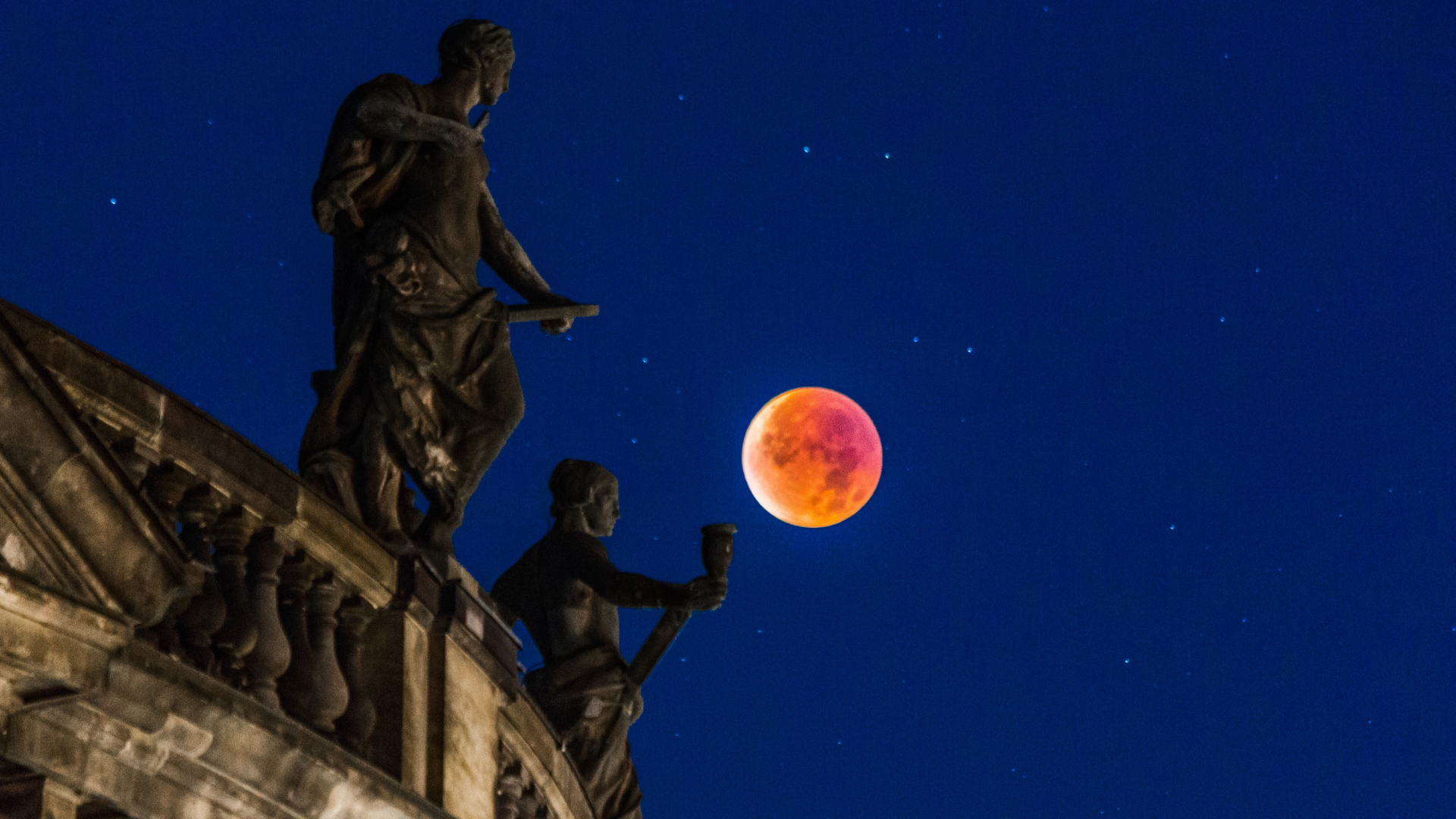
The first total lunar eclipse since 2022 is set to grace the night sky tomorrow (March 13-14, 2025) — but only for those on Earth's night side. During this celestial event, the moon will slip into Earth's shadow for 65 minutes, taking on a deep reddish hue in what’s often called a "blood moon."
While the eclipse will be visible worldwide at the same universal time, the best views will be in North and South America. Observers in parts of Europe may catch a glimpse at moonset, while those in East Asia will see it as the moon rises. The point of greatest eclipse falls over the Pacific Ocean, making it an unforgettable sight for skywatchers across the Americas.
You can watch the lunar eclipse online here on Space.com and catch up with the latest lunar eclipse news and events with our lunar eclipse live blog.
Unlike during a solar eclipse, it is safe to look at the moon during the entire lunar eclipse. They're not only completely safe but also leisurely, lasting many hours. This one occurs between 11:57 p.m. and 6 a.m. EDT (03:57 and 10:00 UTC) — a total of six hours — though arguably the most interesting part, totality, happens between 2:26 and 03:31 a.m. EDT (06:26 and 07:31 UTC).
Read more: Total lunar eclipse brings a blood moon to North America next month. Here's how to see it
Where will the March 2025 total lunar eclipse be visible?
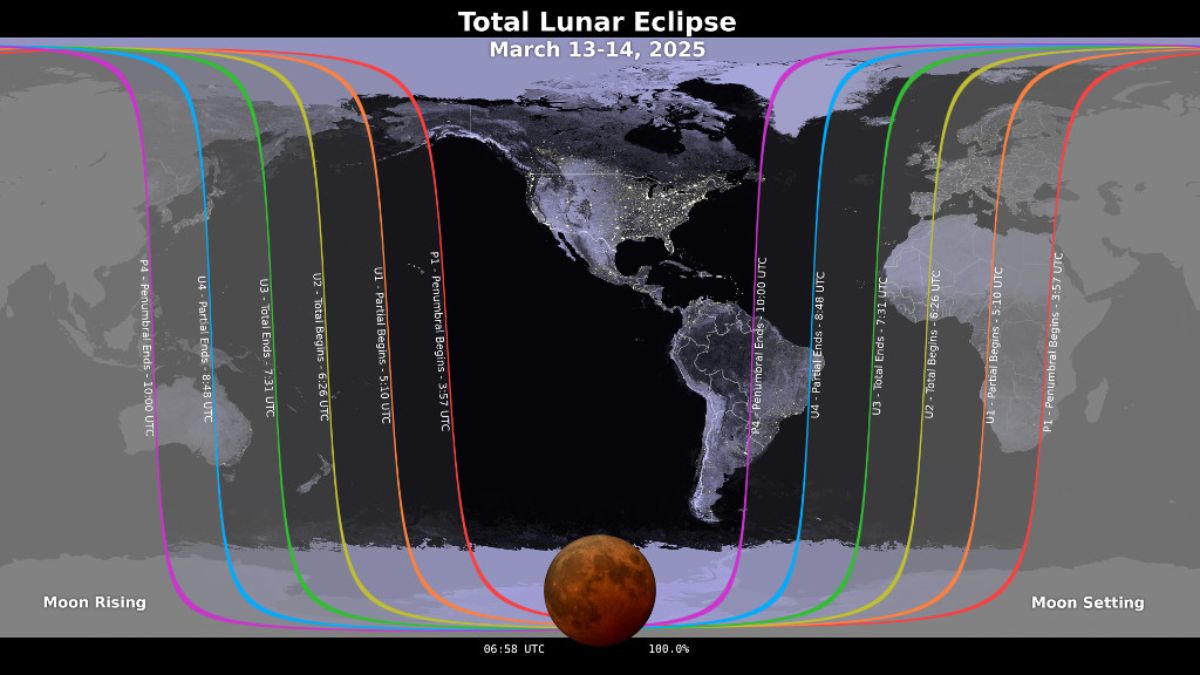
The total lunar eclipse on March 13-14, 2025, will last just over six hours, beginning with a penumbral eclipse — when the moon enters Earth's fuzzy outer shadow and loses brightness — from 11:57 p.m. to 1:09 a.m. EDT (03:57 to 05:09 UTC). There will then be a partial phase — when the moon begins to enter Earth's darker umbral shadow and starts to turn red — from 1:09 a.m. to 2:26 a.m. (05:09 to 06:26 UTC). Totality — when the whole moon is within Earth's umbra — will last 65 minutes, from 2:26 a.m. to 3:31 a.m. EDT (06:26 to 07:31 UTC). The spectacle then reverses, with totality followed by a partial phase from 3:31 to 4:47 a.m. (07:31 to 08:47 UTC) and a penumbral phase from 4:47 to 6 a.m. EDT (08:47 to 10:00 UTC).
The entire eclipse will be visible — and at its best — across most of the Americas, with glimpses for Europe, Africa and East Asia. Here's a breakdown of the eclipse's visibility by region:
Breaking space news, the latest updates on rocket launches, skywatching events and more!
- North America: All phases of the eclipse will be visible across all 50 U.S. states (including Alaska and Hawaii), Canada and Mexico.
- South America: Most of the continent will witness the entire event, with totality visible from Brazil, Argentina and Chile starting after midnight on March 14.
- Europe: Western Europe — including Spain, France and the U.K. — will see totality as the moon sets early on the morning of March 14.
- Africa: Extreme Western Africa — including Cape Verde, Morocco and Senegal — will see totality as the moon sets early on the morning of March 14.
- Oceania: New Zealanders will see the eclipse in its later stages, with the moon already in partial shadow as it rises on March 14.
Where will the total lunar eclipse be visible in the U.S.?
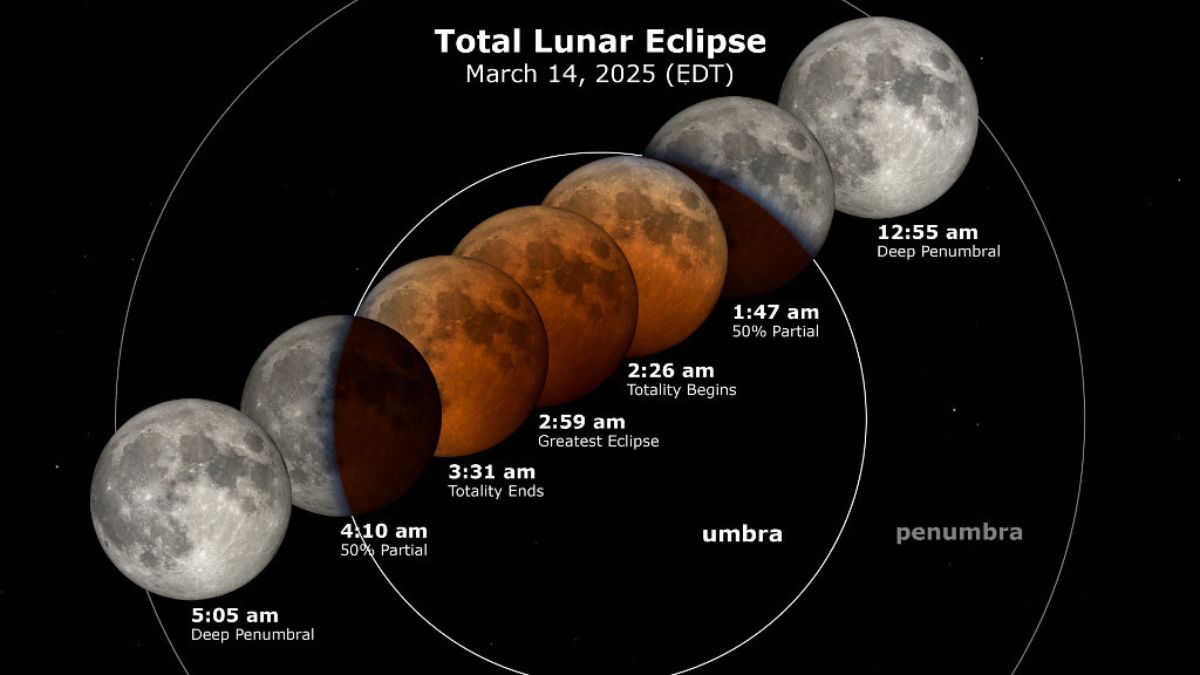
All U.S. time zones will get an excellent view of all phases of this total lunar eclipse, with Hawaii and parts of Alaska missing only the beginning of the initial penumbral phase. Here are the key times for major North American time zones:
- Eastern time zone: The penumbral phase begins at 11:57 p.m. EDT on March 13, partial at 1:09 a.m. EDT on March 14, totality at 2:26 a.m. EDT, partial at 3:31 a.m. EDT and penumbral at 4:47 a.m. EDT. The eclipse ends at 6 a.m. EDT.
- Central time zone: The penumbral phase begins at 10:57 p.m. CDT on March 13, partial at 12:09 a.m. CDT on March 14, totality at 1:26 a.m. CDT, partial at 2:31 a.m. CDT and penumbral at 3:47 a.m. CDT. The eclipse ends at 5 a.m. CDT.
- Mountain time zone: The penumbral phase begins at 9:57 p.m. MDT on March 13, partial at 11:09 p.m. MDT, totality at 12:26 a.m. MDT on March 14, partial at 1:31 a.m. MDT and penumbral at 2:47 a.m. MDT. The eclipse ends at 4 a.m. MDT.
- Pacific time zone: The penumbral phase begins at 8:57 p.m. PDT on March 13, partial at 10:09 p.m. PDT, totality at 11:26 p.m. PDT, partial at 12:31 a.m. PDT on March 14 and penumbral at 1:47 a.m. PDT. The eclipse ends at 3 a.m. PDT.
- Alaska time zone: The penumbral phase begins at 7:57 p.m. AKDT on March 13, partial at 9:09 p.m. AKDT, totality at 10:26 p.m. AKDT, partial at 11:31 p.m. EDT and penumbral at 12:47 a.m. AKDT on March 14. The eclipse ends at 2 a.m. AKDT.
- Hawaii time zone: The penumbral phase is already underway when the moon rises at 6:32 p.m. HST on March 13, partial at 7:09 p.m. HST, totality at 8:26 p.m. HST, partial at 9:31 p.m. HST and penumbral at 10:47 p.m. HST. The eclipse ends at midnight HST.
Where will the March 2025 total lunar eclipse be visible in Europe?
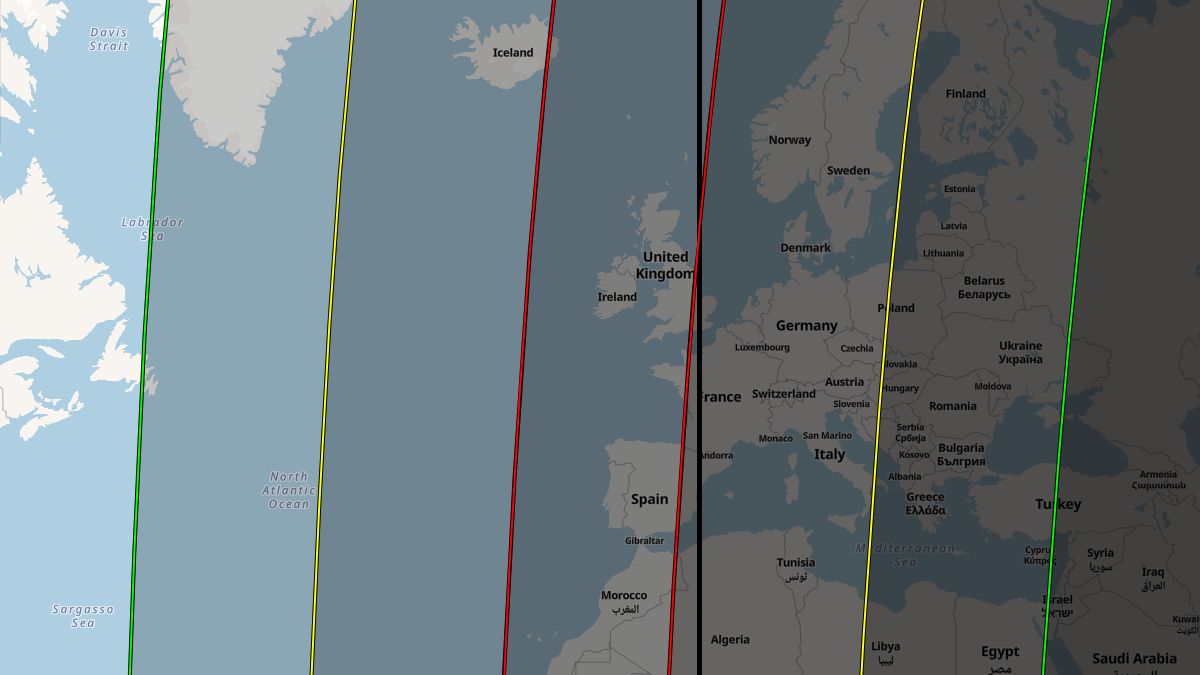
Europe gets a poor view of this total lunar eclipse. In London, the penumbral phase will be viewable from 3:47 a.m. GMT on March 14 and the partial phase from 5:09 a.m. GMT. However, the full moon will set at 6:22 a.m. GMT, just before totality begins, so the only spectacle will be a barely distinguishable line of Earth's shadow across the moon as it sinks into the western horizon. Locations farther west get a slightly better view. From Cardiff, Wales, totality will begin at 6:26 a.m. GMT, 10 minutes before the local moonset, while in Dublin, the local moonset isn't until 6:48 a.m. GMT.
Arguably, the only locations in Europe to see this eclipse in an impressive way are Iceland and Greenland. From Reykjavik, Iceland, totality occurs between 06:26 and 7:31 a.m. GMT, and the local moonset isn't until 7:58 a.m.
What will the weather be like for the March 2025 total lunar eclipse?
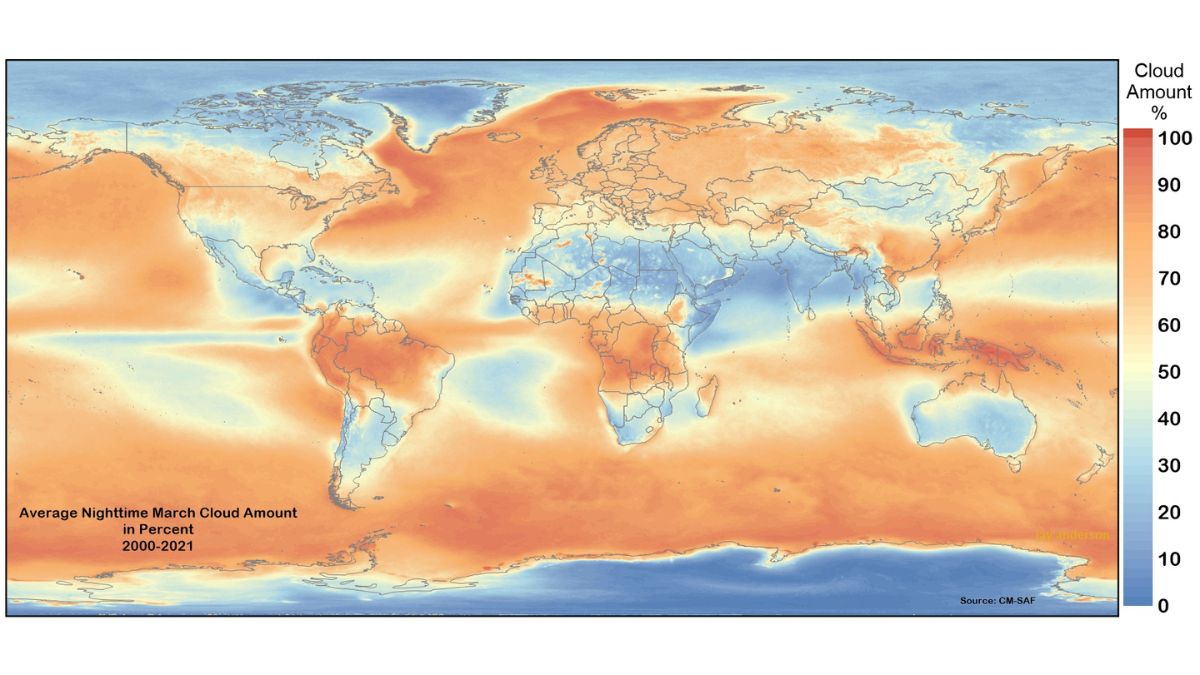
For those on the night side of Earth, a clear sky is arguably the only important factor for visibility, since any location with the moon high in the sky will have precisely the same view. In the map above, blue areas have the smallest chance of clouds. Those locations include Southern California, Arizona and New Mexico; much of Mexico; Chile's Atacama Desert and western Argentina; and extreme Western Africa.
In North America, western parts of the U.S. and Canada typically have better chances of clear skies in March compared with eastern regions. In Europe, cloud cover is hard to predict in March.
Bibliography
Anderson, J. Global Cloudiness by Month. Retrieved Feb. 17, 2025, from https://eclipsophile.com/global-cloud Jubier, X. (n.d.). Total Lunar Eclipse of 2025 March 14 from Chile, Argentina, the USA, or Mexico. Retrieved Feb. 17, 2025, from http://xjubier.free.fr/en/site_pages/lunar_eclipses/TLE_20250314_pg01.html
Time and Date. (n.d.). 13–14 March 2025 Total Lunar Eclipse (Blood Moon). Retrieved Feb. 17, 2025, from https://www.timeanddate.com/eclipse/lunar/2025-march-14
Wright, E and NASA's Scientific Visualization Studio. March 13-14, 2025 Total Lunar Eclipse: Visibility Map. Retrieved Feb. 17, 2025, from https://svs.gsfc.nasa.gov/5473/
Join our Space Forums to keep talking space on the latest missions, night sky and more! And if you have a news tip, correction or comment, let us know at: community@space.com.

Jamie is an experienced science, technology and travel journalist and stargazer who writes about exploring the night sky, solar and lunar eclipses, moon-gazing, astro-travel, astronomy and space exploration. He is the editor of WhenIsTheNextEclipse.com and author of A Stargazing Program For Beginners, and is a senior contributor at Forbes. His special skill is turning tech-babble into plain English.
You must confirm your public display name before commenting
Please logout and then login again, you will then be prompted to enter your display name.
